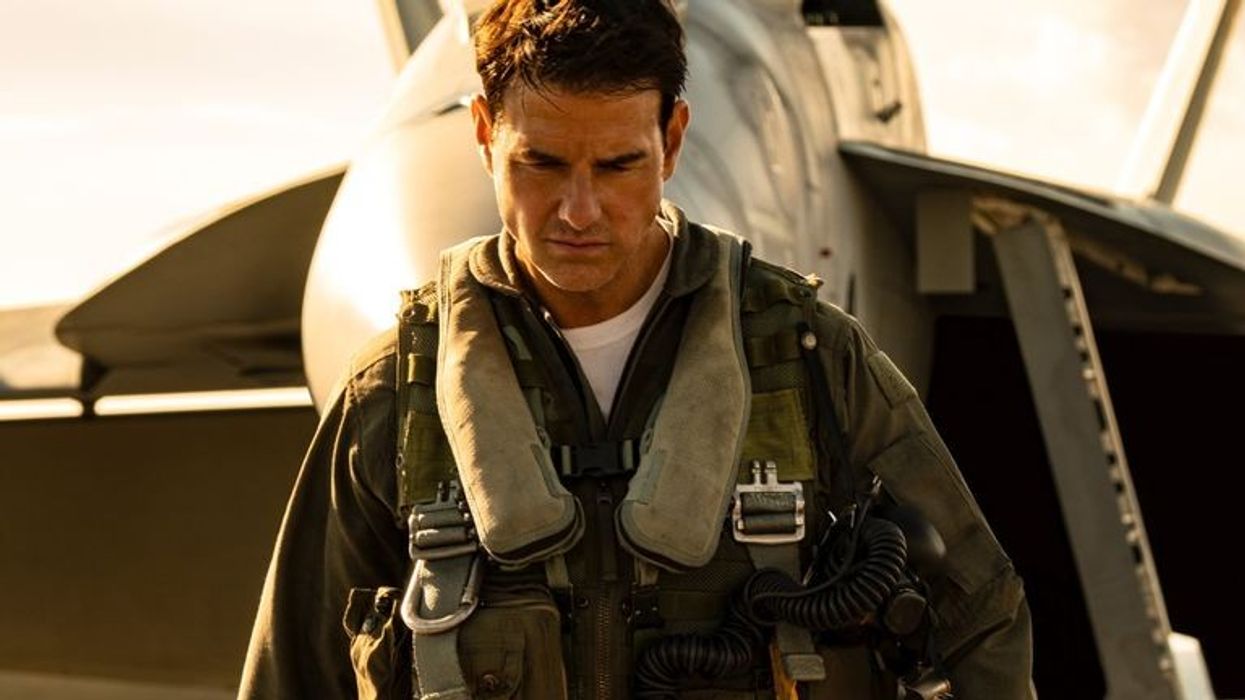You Can’t Fake the Action in 'Top Gun: Maverick,' and This Is How the Filmmakers Pulled It Off
Tom Cruise is notorious for doing his own stunts, but this time he had a cast and crew who wanted to film the action practically, too.

Although my local theater did not have the iconic Nicole Kidman ad welcoming us back to the theater experience, Tom Cruise did make a taped appearance before the opening credits of Top Gun: Maverick. In his short video welcoming us to the theatrical viewing of the long-awaited sequel to Top Gun, Cruise informed viewers that the film used real G-force, and footage from actual flights done by the actors, and that there was an intense amount of practical work done to give us the best viewing experience possible.
Needless to say, the results were phenomenal.
The lengths that Cruise and the cast and the crew of Top Gun: Maverick have gone to provide realistic aerial sequences are unprecedented and unimaginably difficult to execute practically through a camera lens.
In an interview with CineFix, director Joseph Kosinski states that there was no other way to capture the action of the film but through real flight.
“I think when you see the film, you really feel what it’s like to be a Top Gun pilot,” Kosinski said. “You can’t fake the G-forces. You can’t fake the vibration. You can’t fake what it's like to be in one of these fighter jets. We wanted to capture every bit of that, and shooting it for real allowed us to do that.”
Practical fighter jets in Top Gun: Maverick
The journey to capturing these practical shots was long and tested the abilities and limits of the cast, crew, and Navy Top Gun personnel that assisted on the shoot.
Cruise is already a pilot and has experience filming aerial sequences for years. He created a Navy-approved boot camp for the actors to go through for three months to help prepare them to be in a Super Hornet and be comfortable enough to perform these highly ambitious aerial sequences. The boot camp included underwater evacuation, aerial aviation, the preliminary training to build spatial awareness inside the aircraft, and how to fly a plane. Most of the cast ended the boot camp and stepped onto the set with a pilot’s license.
Filming the aerial sequences proved to not only be a challenge for the cast, but the crew too. Even though Kosinski and Cruise have years of experience, figuring out how to mount the cameras and capture the desired angles proved to be difficult. For 15 months, the crew worked with the Naval aviators to teach them about lighting, cinematography, and editing, creating a language that everyone could understand to bring the vision to life.
Once the meticulous planning of pre-production wrapped, it was time to shoot. Because of the finite amount of space available in the cockpit of the Super Hornets, Kosinski was unable to direct what was captured when the pilots and actors were in the air. All he could do was plan, rehearse, and wait to see what the actors captured while in the sky for an hour.

The cast became pseudo-directors as they tried to stay in character throughout the flight, often accidentally breaking character when reacting to specific scenarios.
In one of the scenes in the third act, Miles Teller, who plays Bradley “Rooster” Bradshaw, didn’t strap himself in tight enough and was lifted out of his seat when the jet inverted, causing him to hit his head against the canopy. The accident ended up making it into the final cut of the film due to the realism of a simple oversight and how that can add another level of tension to an action sequence.
Many of the things that made it into the final cut of Top Gun: Maverick were the beautiful single takes that brought something to the film that CGI could never achieve. In the opening scene, Maverick (Cruise) takes off in a prototype with a scramjet attached to it. As he flies over a piece of the set, a shack’s roof detaches, breaking instantly due to the force of the jet’s take off. Kosinski knew, at that moment, that there was no need to rebuild the set because that take was the only one needed.
When filming these practical shots, the unplanned moments become the ones that highlight the real results of real actions. While CGI can provide a level of safety that practical effects can’t always guarantee, CGI cannot provide a level of realism that comes from these types of action sequences.
Kosinski says in the CineFix interview there are “certain worlds, certain stories that require [CGI], but, for me, capturing things in-camera, mostly in-camera, is the most fun. And you know having fun making films is why I do it.”
Top Gun: Maverick is realistic, and there's excitement to behold a spectacle and story that feels larger than life. Not only is this film a fantastical sequel to a beloved 80s film, but it holds up on its own. The sequences are elevated, there is more at risk, and it's a fun ride.
What are your favorite shots from Top Gun: Maverick? Let us know in the comments!
Source: CineFix











